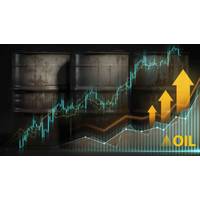Producers Wary of Price Jump, Lock in Gains
Brent curve contango has come off heavily since January; producers sell future production to lock in price rise.
Producers have been locking in recent gains across the crude futures price structure, selling forward contracts and potentially undermining further recovery because they do not trust a jump in front-month oil since January.
Front-month benchmark Brent crude futures have surged more than 40 percent from 12-year lows hit early this year and are now back above $40 a barrel.
Yet the producers - who have been hoping that a 20-month price rout has bottomed out - do not have full confidence that a recovery is underway, as seen by the shape of the Brent forward curve out to the year 2020.
Since January, the spread between Brent for delivery on the 2020 end of the curve and crude for prompt supply has dropped by nearly $8 to around $10.71 a barrel.
"Brent's flattening contango since January comes as many producers want to cash in immediately on recent price rises. They've been heavily selling 2017/2018 and beyond, and it shows that they don't quite trust the higher spot prices yet," said one crude futures trader.
"This means that even the producers don't really expecting a strong price rally until well into 2017 or later," he said.
The companies that explore for oil and pump it out of the ground have been locking in price gains by selling off future output as a financial hedge, pulling down prices for those contracts, said sources with some of the producers and traders who had been counterparty to deals.
The move protects them from another potential sag in the market, as happened in the first half of 2015, but could also prevent a future price recovery, the sources said.
At the heart of the 20-month price rout has been a global supply overhang that sees at least 1 million barrels of crude being produced every day in excess of demand, leaving storage tanks around the world brimming with unsold oil.
Although many analysts have called a bottom to one of the biggest routs on record, that has pulled crude prices down by as much as 70 percent since mid-2014, others side with the producers and warn a sustained recovery is still some way off.
Investment bank Goldman Sachs said this week the surge in prices had come prematurely and that the "oil price rally will prove self-defeating as it did last spring", if not enough output was knocked out by the rout.
And energy consultancy Wood Mackenzie, which advises most major producers on investments, said it expects "the annual average (oil) price for 2016 being lower than 2015 and then recovering in 2017, reflecting large oversupply and high stock levels during the first half of 2016."
Reporting by Henning Gloystein




